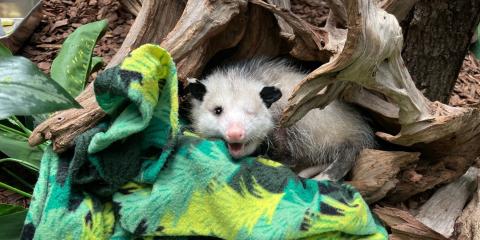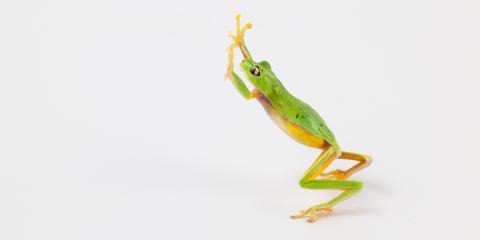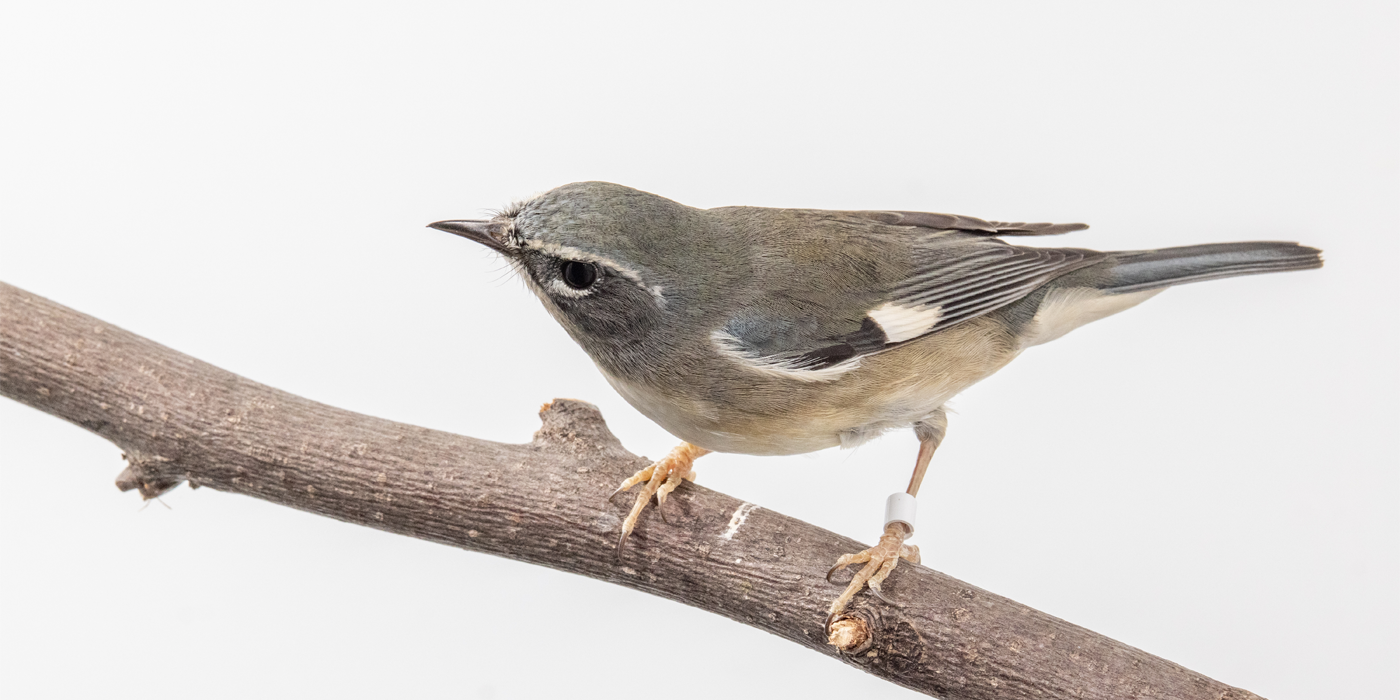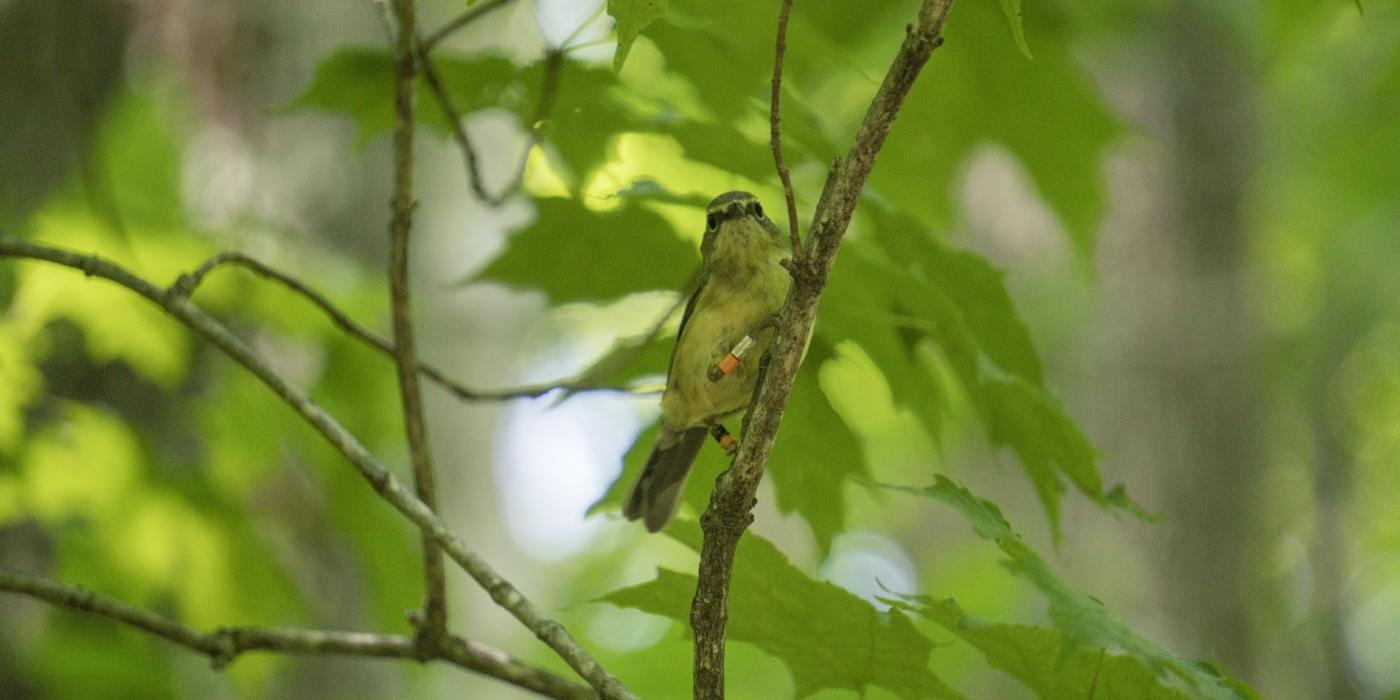Migratory songbirds with distinct black-and-blue feathers, black-throated blue warblers prefer to live and hunt in dense, shady forests with lots of plant growth. They search the undersides of leaves and shrubs for arthropods and primarily feed caterpillars to their young.
Physical Description
Males have a dark blue back with black sides on head, throat and breast. The underside is bright white. Females have an olive back and pale olive to buff undersides. Both males and females have a white square (or "pocket handkerchief") on their wings.
Males show variation in plumage coloration on their backs that does not appear to have a strong genetic basis. Birds in the southern Appalachian mountains have blue back with black streaks, whereas northern breeders tend to have solid blue backs.
Size
Adults are 4.3-5.1 inches (11-13 centimeters) long, and weigh about 0.3-0.4 ounces (8-12 grams).
Native Habitat
Black-throated blue warblers prefer interiors of hardwood forests, with thick, tangled vegetation. During migration, they can be found in all sorts of woodlands and in parks and gardens.
During the winter, they inhabit dense forest, woodlands, shade-grown coffee plantations and second growth areas with trees. One study in Puerto Rico showed males were more common at lower and mid-level forests and females were found in shrubbier habitat higher up.
Communication
Males of the species are known for their distinctive, buzzy "zoo-zoo-zoo-zee" song that has an upward note at the end. Females chirp but typically do not sing.
Food/Eating Habits
Spiders, flies, small snails and caterpillars from the tops and undersides of leaves.
In the winter, their diet expands to include small berries and fruits. In the Dominican Republic, they have been reported to feed on honeydew secretions from scale insects.
Social Structure
Male black-throated blue warblers aggressively defend their breeding territories from other males and will pair up with a female during breeding season. Some males are bigamous, meaning they have two mate at one time. During migration, they form loose flocks with other warblers. They leave their northern breeding areas in late summer through early autumn, migrating mostly at night, and arrive in their Caribbean wintering grounds by mid-October. They leave there in mid-April and arrive back in the north in mid-May. They are seen in the Washington, D.C., area during migration in the spring and fall, and usually pass through Florida on their way to and from their wintering grounds.
Reproduction and Development
Most birds form monogamous pair bonds during the breeding season, and 80% of returning birds nest with mates from the previous year. Mate guarding is common. The males follow their mate while she forages and moves about as well as singing quietly 3-4 meters above her when she is on the nest. This is most intensive during nest building and until incubation begins. A small percentage of males may have more than one mate. Females are known to sneak off their territory and mate with males other than their mate. In any given year, over 50% of nests may contain young sired by a male other than the female’s mate.
Males arrive first on the breeding grounds to establish territories. Females arrive later and explore potential nesting sites. Males will pursue females in short chases through the understory while they are establishing a pair bond. Females often return to the same nesting area each year.
These birds nest in areas of dense understory, in a fork about 3-5 feet (1-1.5 meters) above ground, well concealed in vegetation. The male helps collect nesting materials and the female builds a cup-shaped nest with strips of bark, often from white or yellow birch, and pieces of rotten wood held together with saliva and spiderweb. She lines the nest with animal hair, rootlets, moss and pine needles. Materials from old nests may be reused but the nest itself is not.
Females lay 3-5 eggs, creamy white with dark speckles mostly on the large end. They are incubated by the female for 12-13 days. When disturbed, the female may drop to the ground below their nest and perform a distraction display that looks like they have a broken wing. This act is designed to lead predators away from the nest. Chicks are fed by both parents. They fledge at 8-10 days-old. Often the male becomes the only caregiver for fledglings while the female attempts a second brood. The female often is the only caregiver for the last brood of the year.
Conservation Efforts
Black-throated blue warblers populations increased by 163% between 1970 and 2014, according to Partners in Flight. The estimated global breeding population is 2.4 million. Changes to their breeding, wintering, and migratory stopover habitats could put the species in danger.
Help this Species
- Be a smart consumer. Choose products made with sustainable ingredients, such as Smithsonian certified Bird Friendly coffees, which support farmers striving to limit their impact on wildlife and habitat.
- Be a responsible cat owner, and keep cats indoors or under restraint when outside. Never release animals that have been kept as pets into the wild.
- Conservation starts with you! Join a citizen science project, such as FrogWatch or Neighborhood Nestwatch, where you can help collect valuable data for scientists. Encourage your friends and family to get involved too.
- Plant native flowers in your garden to help feed resident and migrating pollinators. You'll make your lawn beautiful and help wildlife at the same time!
Animal News

Remembering Basil, Our Virginia Opossum



